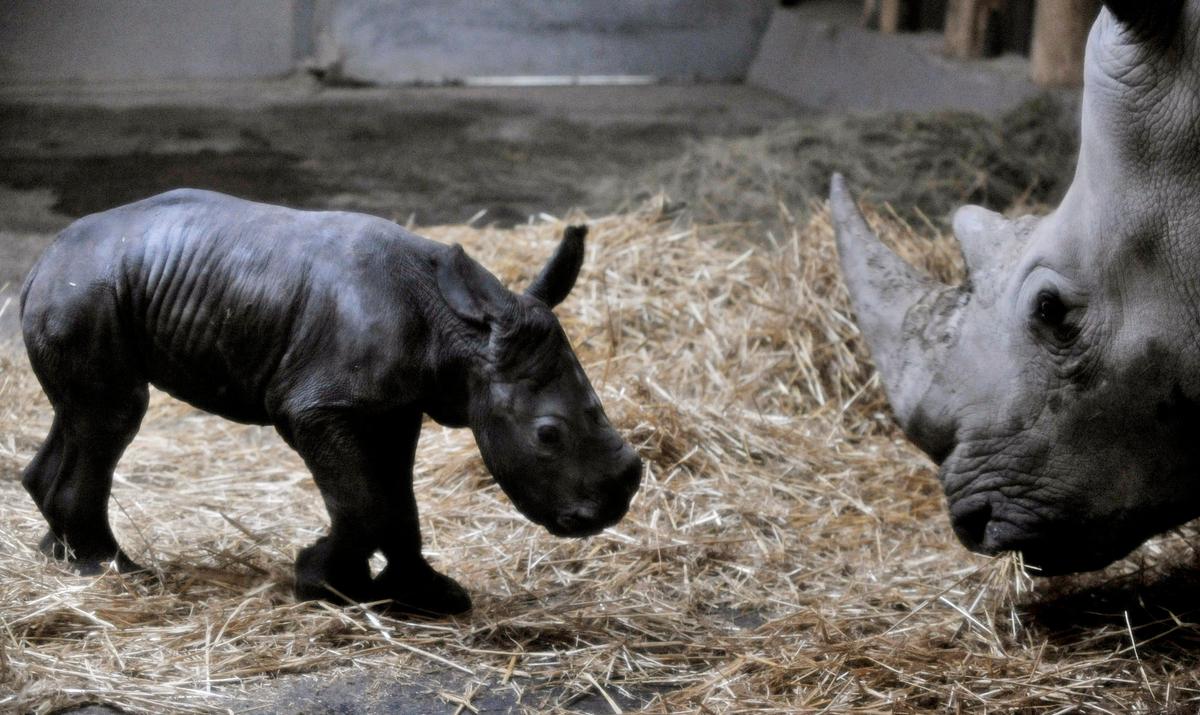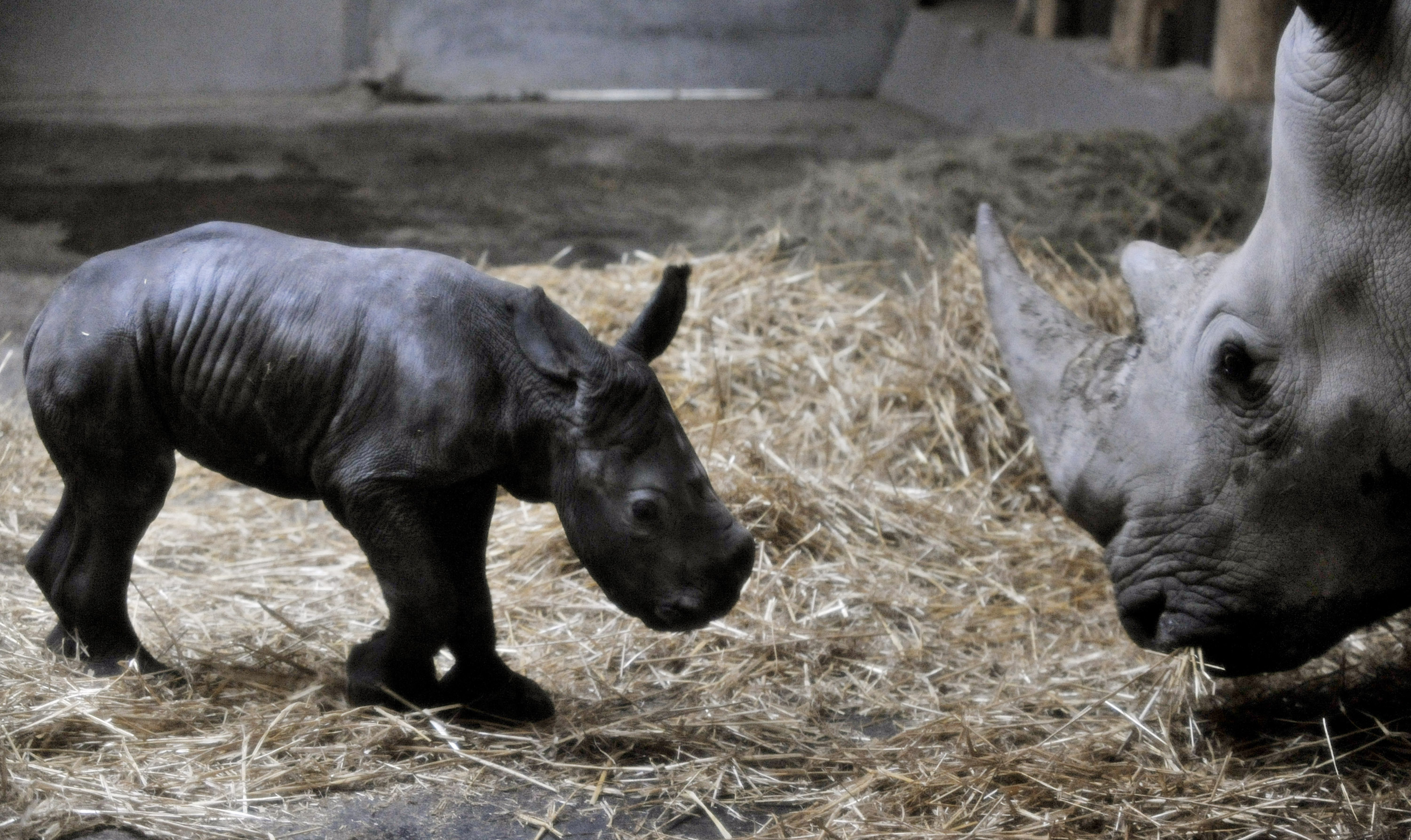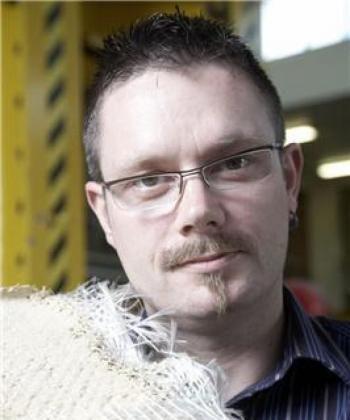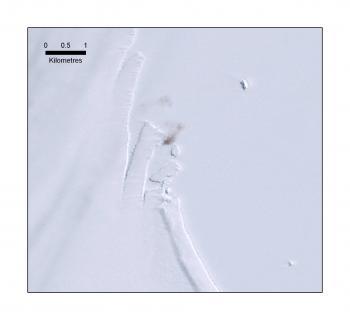For the first time in conservation history, a baby rhino male has been conceived from artificial insemination using frozen sperm. The insemination took place in June 2007 by a team of researchers at the Leibniz Institute for Zoo and Wildlife Research (IZW) in Berlin, Germany, and the rhino was born at 4:57am on October 22nd in Budapest Zoo, Hungary.
The frozen sperm originated from a rhino bull in the UK, 38-year-old Simba, and was placed in rhino cow Lulu after several unsuccessful mating attempts by a younger pair in Colchester Zoo. This insemination is not only an achievement in that the father’s semen was still fertile and viable despite his being no longer young, but the fact that the semen used was cryopreserved for three years in liquid nitrogen at ‑196°C. Dr Robert Hermes, an IZW scientist who helped perform the insemination said the birth is “an important success for species conservation and preservation of biodiversity.”
IZW scientists extracted and froze Simba’s sperm cells with a new deep-freezing technology adapted for wildlife sperm, while specialists from Berlin carried out a non-surgical insemination procedure, previously developed at IDW. The rhino baby weighed 45kg, showed good health and was accepted by his mother, Lulu. This project was part of a greater international conservation effort closely linked with to the Veterinary University of Vienna. Further details are reported in the current online edition of the scientific journal, Theriogenology, entitled ‘How to fertilise a rhino with cryopreserved semen.’
“This scientific success enables us to bring new gene material from the wild to the rhino conservation breeding without having to transport the animals”, said Hermes. “In the future, reproduction experts can anaesthetise wild bulls, collect semen from them, and use the frozen sperm, eg. for breeding offspring in international zoos. This is a very important result for conservation efforts.”
This successful operation means that other highly endangered species with only a handful of survivors left could be saved from extinction or preserved for future circumstances.
On the current situation, Dr Martin Brooks, Chairman of the African Rhino Specialist Group (AfRSG), within the International Union for Conservation of Nature, told The Epoch Times: “The southern white rhino have recovered well to about 17,500 in the wild from 20–50, 110 years ago. However it could be good news for the critically endangered northern white rhino.”
Despite attempts by the Berlin team on the northern white rhinos, Dr. Richard Emslie, Scientific Officer of the AfRSG, said to The Epoch Times: “One advantage of using frozen sperm is that they have some from a northern bull that is now dead, and by successfully using sperm, the effective founder number could be increased.”
It is estimated that apart from the eight individuals in other zoos worldwide such as the San Diego wild Animal Park and Dvur Karlove in the Czech Republic, only four others exist in the Garamaba National Park in the Democratic Republic of Congo. But after unsuccessful attempts to locate them, it is feared that even these have been killed by poachers, whose numbers have increased due to war and civil conflicts.
“As for Garamba. It is not certain that there are no northern whites left in the wild. While they have not been sighted in the Park and surrounding hunting areas recently, no carcasses have been found either and the area is large and the animals less easily seen from the air than they once were. However the area is still volatile. Systematic ground surveys are underway at the moment to determine the likely numbers remaining in the wild,” said Emslie.
When asked whether this procedure could be realistically used to increase the population of northern white rhinos, he said: “The plan is to move the remaining zoo rhino from the Czech Republic to set up a wild population in South Africa, in the hope that a more normal free ranging environment and fresh grass might help stimulate breeding.”
“However the plan is to also continue to try artificial insemination with these animals either before they leave the Czech Republic or in their new home in South Africa. Being realistic there can be no guarantees this combined approach will work. There is probably more chance of it failing; but it is the best option we have to try to save the subspecies for now.”
Even if there was successful breeding between them, there is yet another hurdle for them. “With only three founders, chances of success are reduced and one is more likely to run into inbreeding problems in future. However, as artificial insemination techniques are perfected further, there may be a key role for artificial insemination using frozen sperm to try to introduce new blood in future.”






Friends Read Free